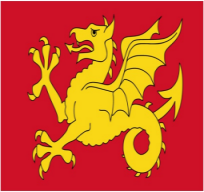G8JNJ
About
- Username
- G8JNJ
- Joined
- Visits
- 4,662
- Last Active
- Roles
- Member
- Points
- 130
Reactions
-
i have had the KiwiSDR2 for a couple of days.... and
It's not that easy, as it depends on the source, and whatever it is connected to.
Especially as John has already indicated that there is likely to be more than one source.
That's why I suggest switching off your power at the main board, you will then be able to see what is under your control, and what is external.
Bringing the power back up, breaker by breaker, should allow you to better narrow down the location of a noise source.
Concentrate on one specific signal at a time, some of them will appear on many other frequencies.
Get rid of the worst offender first, and then gradually work on the others.
Be as methodical as possible.
Regards,
Martin
-
i have had the KiwiSDR2 for a couple of days.... and
-
Temporary Markers / Labels
-
UpDate to Debian 11.9 and KiwiSDR to 1.707
I don't think you will be able to get in using WinSCP.
I'm experiencing similar problems since updating the OS version, and WinSCP doesn't provide the option to log in as su. I seem to remember reading a thread about it but can't find it.
Also, with Debian 11 to enable root login, you can add a line to the sshd_config file in /etc/ssh/sshd_config:
Edit the file as root using nano /etc/ssh/sshd_config
Add the line PermitRootLogin yes in the Authentication section
Save the file
Restart the SSH server using service sshd restart
I swear the Linux folks move the goalposts purely to keep us muggles at bay, but if you do find a solution, be sure to tell us, as this is turning out to be a real pain.
Regards,
Martin
-
I think we made contact :-D
Yeh, I realised you were joking.
If you live in that part of the world, then I'm surprised you can hear anything other than radars :-(
The Wave radar you mentioned is very strong in Europe, which is why I thought it must be located over this direction, but I could be wrong.
Wave radars do occupy more than 50kHZ, so the SigID Wiki is incorrect.
The list of US Wave Radars can be found here (warning, it takes a long time to load) This also states their sweeprate (typically 1, 2 & 4 seconds) and bandwidth (some are 100, 600, 1000kHz)
https://hfrnet.ucsd.edu/sitediag/stationList.php
Another list containing European projects (also slow to load) click on the "download metadata" option to get a list.
If anyone does find a list for Asia, Australia etc. I'd be keen to see it.
Regards,
Martin
-
I think we made contact :-D
-
Dozens of CW transmissions?
-
W6LVP Amplified Receive-Only Magnetic Loop Antenna / Where to buy in NZ?
There was an extensive thread regarding the 393WA
https://forum.kiwisdr.com/index.php?p=/discussion/comment/17852#Comment_17852
-
W6LVP Amplified Receive-Only Magnetic Loop Antenna / Where to buy in NZ?
-
Dragging band edge and losing the "handle" [fixed in v1.700]
Hi John,
Not a big deal, but it may be related to the mouse behaviour.
I notice that sometimes when I click on the waterfall, the KiWi doesn't tune to that frequency, but it remains on an existing frequency. A second click is then required before it tunes correctly.
I have only noticed this over the past month or so, but it may have been like this for a while.
Regards,
Martin


